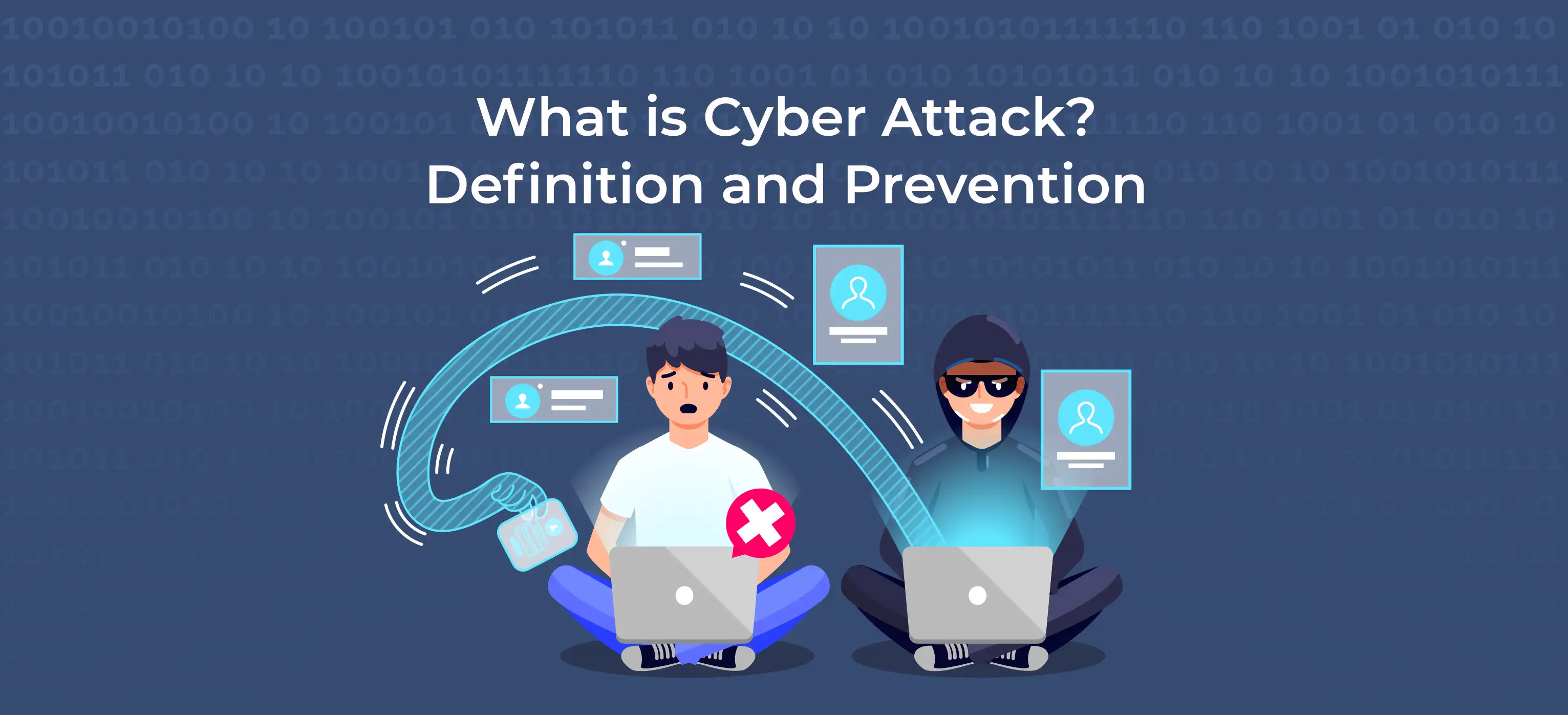 Satendra K
Jan 25, 2024
Satendra K
Jan 25, 2024

Keeping data, information, and resources secure is difficult in the era of vulnerability, where numerous threats and hazards are constantly vying for virtual assets. Everyone is concerned and terrified about cyber attacks, which are among the most popular ways to take advantage of digital assets.
Cyber-attack is a phrase that generally refers to a wide range of malicious actions aimed at damaging resources or data. The phrase refers to any unauthorized access effort to a certain system, computer, or device. Learn more on cyber attacks in depth.
A broad term with broad meanings, "cyber-attack" covers a lot of ground. In simple terms, it is the aggressive method a hacker or threat actor uses to damage the valuable content of a person or a company. Systems, smartphones, connections, databases, data management, security architecture, and a host of other assets could be among the assets that are impacted because of cyber attacks.
In order to access the stored information or cause related functions to malfunction, the main goal of a cyber-attack is to get admin-level access to a specific asset or corrupt it. The majority of cyberattacks are planned and carried out by a malicious individual or group, often known as a cybercriminal, or by a criminal organization. They may be internal or external resources.
You may also like to read: Top in Demand Cybersecurity Skills
Cyberattacks carried out by third-party criminal organizations, expert hackers, or government actors are regarded as external threats. The assailants don't even know the target well and don't hold any personal grudges against them. Simply said, they find a weakness in the infrastructure or security system of the target and use it to their advantage.
These are the dependable individuals who have already been granted verified access to an organization's digital assets. These professionals occasionally abuse these resources for their own benefit. Most internal cyber-attacks involve negligent personnel, a fired employee with access to sensitive data, or irate clients, partners, or contractors.
They abuse the resources and the trust that has been placed in them. However, internal resources can be used in cyberattacks that aren't necessarily planned in advance. They may occasionally occur unintentionally as well.
A cyber-attack may have any number of motives, including the theft of data or money. The following are some of the main causes for conducting a cyber-attack. The majority of cyberattacks are designed to bring in money.
Although a cyber attack might be extremely damaging and dangerous, protecting resources against it is still achievable if you use the greatest defences available. Here are a few ways to prevent Cyber-attacks:
One of the simplest yet most effective ways to keep unwelcome annoyances at bay is by using a firewall and antivirus software, which can filter all incoming traffic, identify harmful information, and monitor activities on the device. It takes little effort to use this program because everything is automated.
Experts to propose tight internal control techniques as a means of preventing or reducing cyberattack events. Make sure access controls are in place for all of the resources because only verified and trusted resources can access them.
The end-users can choose from a variety of cutting-edge security features with each system/OS. System/OS updates can make devices less vulnerable to cyber attacks.
Employees that understand the value of cyber security are a strong line of defence against cyber-attacks because they won't tolerate bad behaviour, won't allow unauthorized personnel access, and won't leave resources open to phishing scams. In addition to having several awareness activities, organizations should offer cybersecurity training for new hires.
Also read: Top Reasons Why Cybersecurity is Important
To catch any harmful behaviour in its early stages, every source of information, activity, and third party should always be monitored. A robust monitoring mechanism needs to be in place.
Even in the event of a cyber-attack, you are less likely to lose important data if you regularly back up your data since you are prepared for the worst-case situation.
Controlling who could have access to your network is crucial because accept it or not, one of the cyberattacks your business can experience on your networks can be physical. The ability to view your whole system or infect it is available to anyone who enters your office or business and plugs a USB key with malware attacks into any of your machines. Accessibility to your computers under strict supervision is crucial. A security management system is a great approach to preventing both break-ins and cybercrime.
Check out: Future of Cybersecurity- Growing Cyber Risks & Prevention
Getting started with defending your company from cybercrime and cyber attacks can be challenging. There is so much information available that it can be debilitating, particularly when the information is contradictory.
You may also be interested in: How to Become a Cybersecurity Professional?
Here is the list of other major locations where Edoxi offers Cybersecurity Certification Courses
| Country | UAE | Oman | Qatar |
| Course Location | Dubai | Muscat | Doha |

Chief Technology Officer & Cyber Security Expert Trainer
Satendra Singh Khari is a renowned cybersecurity expert and the Chief Technology Officer at Edoxi, where he leads the CEH v13 AI program. With over 12 years of experience, he has trained more than 10,000 professionals and earned recognition in the Circle of Excellence for 2023 and 2024. Mr. Khari holds multiple industry certifications, including CISSP, CISM, CEH, CPENT, and CREST, which showcase his expertise in vulnerability assessment, penetration testing, and incident handling.
His practical insights, gained during his tenure as Head of Information Security in Malaysia, enhance the learning experience by providing students with essential technical skills and a clear path to career advancement. Recognized as a leader in his field, he has received the Internet 2.0 Outstanding Leadership Award for three consecutive years (2022-2024), reflecting his dedication to empowering the next generation of cybersecurity professionals.